Vitiligo Diet – What Is It & How Does It Help Treat Vitiligo?
Overcome the deficiencies and manage the condition with a balanced and nutritious diet.

Image: Shutterstock
Vitiligo is characterized by the loss of skin pigments on certain areas of the skin, leading to pale, whitish patches (1). While many follow certain vitiligo diets to deal with this condition, most of them lack proper scientific evidence. In addition, as vitiligo is an immune system disorder, a diet that works on the immune system may greatly help.
Continue reading to learn more about this condition and understand what kind of diet may be suitable to slow down the pigment loss. You will also know what lifestyle changes you can adopt.
 At A Glance: Vitiligo Diet
At A Glance: Vitiligo Diet- Principle: A balanced diet rich in antioxidants, omega-3 fatty acids, and vitamins and minerals that help reduce oxidative stress and slow down depigmentation of the skin.
- Purpose: To prevent the spreading of skin depigmentation and boost the immune system.
- Who It Is For: People with vitiligo (an autoimmune skin condition).
- Duration: Long-term
- Who Should Avoid: People with gluten sensitivity, pregnant women, and children.
- Cons: May lead to weakened immunity due to low intake of vitamin C.
In This Article
How To Treat Vitiligo – Diet And Lifestyle
- Vitiligo Definitive Facts
- Vitiligo Sample Diet Plan
- Foods To Eat
- Foods To Avoid
- Overcoming Nutritional Deficiencies
- Lifestyle Changes
- Role Of Exercise
- Benefits Of Vitiligo Diet
- Side Effects Of Vitiligo Diet
Vitiligo Definitive Facts
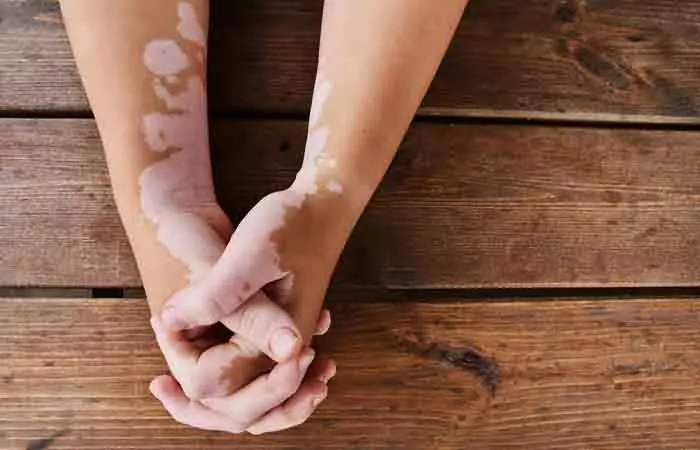
- People with vitiligo may have to consume a special or nutrient-dense diet to prevent the worsening of their skin condition or to overcome nutritional deficiencies.
- Since vitiligo is an autoimmune disease, it is prudent to eat a diet that is rich in phytochemicalsi Chemical substances plants make to protect themselves against diseases caused by fungi, bacteria, and other plant viruses. , beta-carotenei One of the carotenoids, a group of colorful pigments, present in many fruits and vegetables, and which is transformed into vitamin A in the body. , and antioxidants. Such an immune-boosting diet may help strengthen the immune system and promote healthy skin, and may pave the way for repigmentation of the skin.
- If you have vitiligo, avoid consuming pears and blueberries. These fruits are natural sources of hydroquinonesi A skin-lightening chemical that bleaches the skin and is beneficial for treating various types of hyperpigmentation. , which are known to have depigmentation properties.
- Some people also face problems with citrus fruits, while others may find turmeric, which is used as a seasoning in foods, causing problems.
- Hence, if you fall under these categories, you should avoid citrus fruits and/or turmeric.
- Some people prefer to avoid red meats and dairy products. However, there is no scientific evidence to back this. If you have an underlying allergy to dairy, you should avoid it as it may adversely affect your vitiligo.

 Did You Know?
Did You Know?Vitiligo Sample Diet Plan

| Meal | What To Eat |
| Early Morning | 1 glass water in a copper glass |
| Breakfast | Options:
|
| Lunch | Options:
|
| Post Lunch | 4 almonds |
| Evening Snack | 1 glass fruit juice + 1 multigrain biscuit |
| Dinner | Options:
|
This diet chart includes foods that are allowed for individuals with vitiligo. Apart from eating leafy veggies, you may also take supplements (only after consulting your doctor).
Key Takeaways
- A balanced diet of nutritious fruits, vegetables, proteins, dairy, whole grains, and herbs helps keep vitiligo in check.
- Avoiding fruits with high vitamin C content, such as orange and papaya is advised, as it can hinder the formation of pigments in the skin.
- Vitiligo may be caused by a vitamin B12 deficiency that can be treated with supplements.
- Regular exercise may keep your mood uplifted and negative thoughts away.
Does The Vitiligo Diet Work? What Chrissy Arsenault, RDN, Says
According to Chrissy Arsenault, RDN, “Vitiligo is a skin condition characterized by the loss of pigment in certain areas, resulting in white patches on the skin. While there is no specific diet proven to cure or prevent vitiligo, we do know that certain nutrients play a role in skin health and a balanced diet can contribute to overall well-being. Antioxidants help protect the skin from harmful free radicals, which are believed to play a role in various skin conditions like vitiligo. Incorporating a variety of colorful fruits and vegetables into the diet can provide a range of antioxidants. I typically recommend my clients to consume 2–3 colors of fruits and veggies at every meal as a rule of thumb.”
Everyone’s dietary needs are different. Some foods may help some people, while others might not feel the same benefit. So, make sure you work with a healthcare provider or nutritionist to create a diet that will be most beneficial for you. Customizing your diet can make it more effective in managing vitiligo symptoms.
Foods To Eat
As mentioned earlier, there is no real vitiligo diet per se. However, you should look at supporting your condition by following a balanced and nutritious diet.
Fruits – Figs, apricots, ripe mango, dates, apples, and bananas.
Vegetables – Try to consume a plant-based diet consisting of spinach, beetroot, carrot, potato, cabbage, radish, cauliflower, red chili, bitter gourd, and green beans. Make sure a major bulk of your diet consists of these vegetables, as long as you do not find it difficult to digest them.
Protein – In case you yearn for animal products, opt for chicken breast, lean cuts of turkey, wild fish, and organic eggs. It is best to cook them lightly. For vegans, stick to kidney beans, chickpeas, mushrooms, and lentils.
Dairy – Dairy products can be consumed. However, depending on the level of the condition, some patients are advised to consume a dairy-free diet.
Whole Grains – Include a diet comprising whole foods in your lifestyle. Consume oats, brown rice, white rice, couscous, quinoa, and corn.
Supplements – You may have vitamin B12, protein, calcium, minerals, and DHA deficiencies. Hence, take supplements to overcome these deficiencies. Consult your doctor before taking any supplements.
Beverages – Allowed vegetable and fruit juices, and coconut water (if you are tolerant to it)..
Herbs & Spices – Rosemary, thyme, basil, coriander leaves (small amounts), clove, black pepper, cardamom, cinnamon, and nutmeg.
Foods To Avoid
Fruits –
Gooseberry, orange, nectarine, prune, peach, pineapple, lemon, lime, melon, watermelon, grapes, papaya, guava, grapefruit, pear, tamarind, and any fruit that has a good amount of vitamin C. Vitamin C inhibits the formation of pigments (2). Therefore, avoid consuming it.
Vegetables – Eggplant, tomato, green chili, onion, and garlic..
Protein – Beef, pork, and fish.
Dairy – Milk, curd, and buttermilk..
Beverages – Carbonated and sweetened drinks, packaged fruit juices, coffee, vitamin C-rich fresh fruit juices, and alcohol.
Spices – Turmeric
Others – Avoid oily, spicy, processed, packaged, and canned foods. Avoid consuming wafers, pickles, and chocolates.
Overcoming Nutritional Deficiencies
Researchers have found that people with vitiligo often have a deficiency of vitamin B12 folatei A water-soluble, naturally occurring form of vitamin B9 found in a variety of foods such as beans, peas, nuts, and dark-green leafy veggies. (3), and certain minerals such as zinc and copper (4), (5). You should get your vitamin levels checked regularly. If there is a deficit, speak to your doctor about taking supplements or overcoming the deficiencies through foods rich in those vitamins.
If you want to know how to increase melanin production naturally, then it is best to consume foods rich in vitamins B12, C, D, E, amino acids, and antioxidants. Vitamin B12 is naturally found in soy milk, fish, shellfish, dairy products, and meat (6). If you have folate and zinc deficiency, include leafy green vegetables, fruits, peas, dried beans, legumes, and nuts in your daily diet (7) (8).
A blogger shared her experience with vitiligo and how eating liver helped keep her vitamin B12 level in check. She said, “I have been incorporating beef, chicken and lamb liver into my diet every week. My B12 levels are awesome now (i).”
 Trivia
TriviaLifestyle Changes

- Having vitiligo can impact one’s social experiences and mental health negatively. Hence, it is important to manage your stress levels and maintain a healthy mind. Try doing yoga or join a vitiligo support group to manage emotional stressors.
- Get adequate exposure to sunlight. Not only will it ensure that you have adequate levels of vitamin D, but it may also stimulate repigmentation (10). The melanocytes in the skin tend to produce melanin when exposed to sunlight. This facilitates darkening of the skin to protect it from getting burned. Vitiligo occurs when there is a melanin deficiency in the body. This condition is also known as hypopigmentation.
- Get enough sleep. The human mind needs to rest for at least 7 hours every day to function properly.
- Eat tasty and nutritious foods. Experiment or search online for delicious recipes that are easy to cook. Always opt for home-cooked food.
- Avoid eating processed foods high in sugars and tans-fat as they may lead to inflammation and skin irritation. Alcohol and high-fat diets can worsen skin inflammation (11).
- Revive an old hobby or pick a new one.
- Avoid negative people and negative thoughts.
A study was conducted in November 2019 on 1176 patients to understand the prevalence of anxiety amongpeople with vitiligo. The study found the prevalence rate of anxiety among these patients to be 35.8%. Furthemore, the prevalence of anxiety was 47.3% in females and 42.4% in males respectively.
Role Of Exercise

Regular exercise triggers mood-enhancing hormones. This will help you stay positive as you take measures to cure and prevent vitiligo from spreading further through diet and medication. Power yoga, meditation, dancing, and playing a sport will help you feel good about your body and prevent anxiety or depression from weighing you down.
Benefits Of The Vitiligo Diet

- Prevents the spreading of skin depigmentation.
- Helps to lead a healthy life.
Side Effects Of The Vitiligo Diet
- May cause nutritional deficiencies.
- Leads to weakened immunity.
Infographic: Celebrities Who Embraced Vitiligo
Vitiligo is a skin condition characterized by white patches on the skin. While it cannot be treated, you can manage the condition with a healthy diet and exercise. In the below infographic, we have compiled a list of celebrities who embraced vitiligo and inspired many others to lead a fulfilling and confident life. Scroll down to know more!
Some thing wrong with infographic shortcode. please verify shortcode syntax
Vitiligo is an autoimmune diseasei A condition caused when the body's natural defense system is unable to distinguish between healthy cells and a foreign body and ends up attacking the healthy cells. that cannot be completely treated. However, you can slow down the progression of this depigmentation disorder by addressing certain nutritional deficiencies — like vitamin B12, iron, and zinc. Adopting a vitiligo diet that is rich in beta-carotene, antioxidants, and phytochemicals is the best way to go about it. Certain citrus fruits and turmeric are said to possess depigmentation properties. Hence, they should not be consumed. Consume non-citrus fruits, vegetables, and protein-rich chicken breasts, and take certain supplements as part of this diet. Consult a doctor before starting this diet plan.
Frequently Asked Questions
What is the fastest way to cure vitiligo?
Vitiligo has no definite cure as of now. It is a chronic condition. However, lifestyle changes, healthy diet, exercise, and being mindful of nutritional deficiencies may help prevent the spread.
Is tea good for vitiligo?
While it has not been established for humans yet, research on mice suggests that green tea could have beneficial effects on vitiligo (12).
Which dal is good for vitiligo?
While there is no specific dal that has been proven to be effective in treating it, consuming a variety of lentils like moong, masoor, chana, and urad dal may help manage the symptoms.
Is ghee good for vitiligo?
Anecdotal evidence suggests that the vitamin and fat content in ghee may help improve this condition. However, more studies are warranted to prove this claim.
Can vitiligo spread after 2 years?
Yes, the chance of progression is 50% in the case of focal vitiligo (a rare type where depigmented patches develop in a small area), which may eventually progress to non-segmental vitiligo (13).
Does vitiligo spread with age?
The disease’s progression differs from person to person and it can occasionally spread over time.The rate at which vitiligo will advance over a period of years is unknown. In some cases, the state could persist for a very long time without altering.
Can a vitiligo diet be combined with other treatments, such as light therapy or medication, to enhance the results?
Studies suggest that combining a gluten-free and vitamin B-12-rich diet with topical steroid treatment may lead to better repigmentation in people with vitiligo compared to topical treatment alone (14).
How can I ensure that my vitiligo diet is balanced and sustainable in the long term?
Consult your doctor to understand the right treatment options and diet required to manage the symptoms. Do frequent follow-ups and avoid restrictive diets to help improve the symptoms of vitiligo.
Some thing wrong with illustration image shortcode. please verify shortcode syntax
Make informed food choices when it comes to vitiligo. Watch this video to get an insight on the foods that you should avoid at all costs if you have vitiligo.
Personal Experience: Source
StyleCraze's articles are interwoven with authentic personal narratives that provide depth and resonance to our content. Below are the sources of the personal accounts referenced in this article.
i. My healing journey – vitiligohttps://freshfrugalmama.wordpress.com/2014/05/22/re-pigmentation-my-vitiligo-healing-journey/
References
Articles on StyleCraze are backed by verified information from peer-reviewed and academic research papers, reputed organizations, research institutions, and medical associations to ensure accuracy and relevance. Read our editorial policy to learn more.
- Vitiligo: A Review
https://karger.com/drm/article/236/6/571/114586/Vitiligo-A-Review - Vitamin C in dermatology
https://www.ncbi.nlm.nih.gov/pmc/articles/PMC3673383/ - Serum homocysteine, folate, and vitamin B12 levels in patients with vitiligo and their potential roles as disease activity biomarkers: A systematic review and meta-analysis
https://www.sciencedirect.com/science/article/abs/pii/S0190962218324836 - Evaluation of the serum zinc level in patients with vitiligo
https://www.ncbi.nlm.nih.gov/pmc/articles/PMC5420602/ - Decreased copper and zinc in sera of Chinese vitiligo patients: A meta-analysis
https://onlinelibrary.wiley.com/doi/abs/10.1111/1346-8138.12392 - Vitamin B12
https://ods.od.nih.gov/factsheets/VitaminB12-HealthProfessional/ - Folate
https://ods.od.nih.gov/factsheets/Folate-HealthProfessional/ - Zinc
https://ods.od.nih.gov/factsheets/Zinc-HealthProfessional/ - Vitamin D Deficiency in Patients With Vitiligo: A Cross-Sectional Study From Basrah, Iraq
https://www.ncbi.nlm.nih.gov/pmc/articles/PMC8790802/ - A cross-sectional study of spontaneous repigmentation in vitiligo
https://ijdvl.com/a-cross-sectional-study-of-spontaneous-repigmentation-in-vitiligo/ - Dietary influences on skin health in common dermatological disorders
https://pmc.ncbi.nlm.nih.gov/articles/PMC10982215/ - The therapeutic effects of EGCG on vitiligo
https://pubmed.ncbi.nlm.nih.gov/25128425/ - Focal vitiligo: long-term follow-up of 52 cases
https://pubmed.ncbi.nlm.nih.gov/27061013/ - Diet and Vitiligo: The Story So Far
https://www.ncbi.nlm.nih.gov/pmc/articles/PMC9515252/
Read full bio of Merlin Annie Raj
Read full bio of Ravi Teja Tadimalla
Read full bio of Payal Karnik






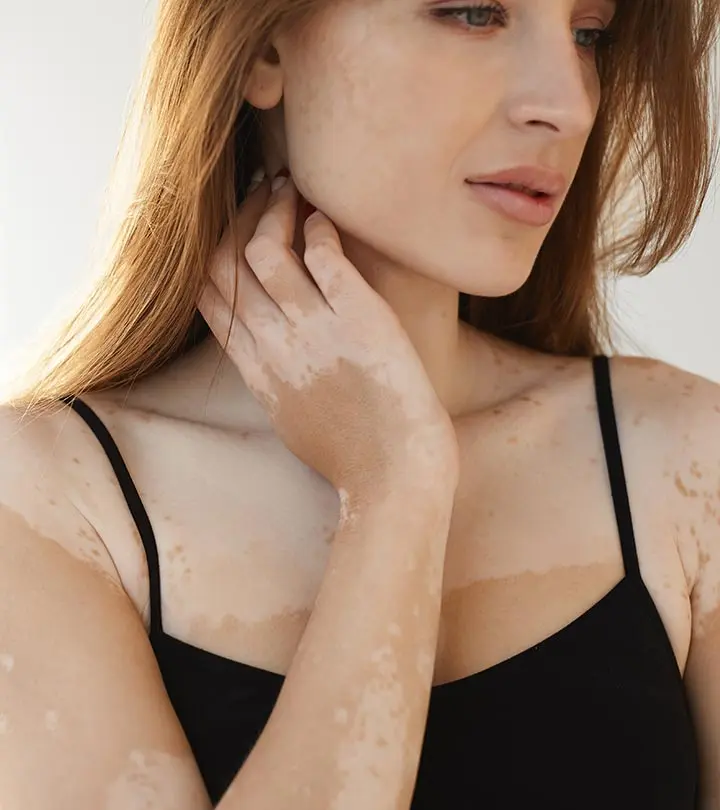


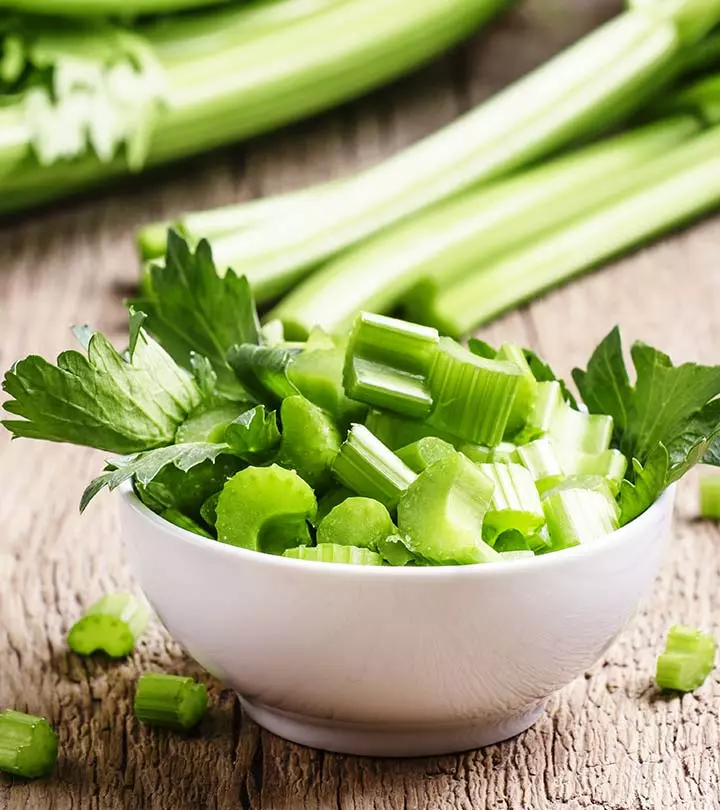
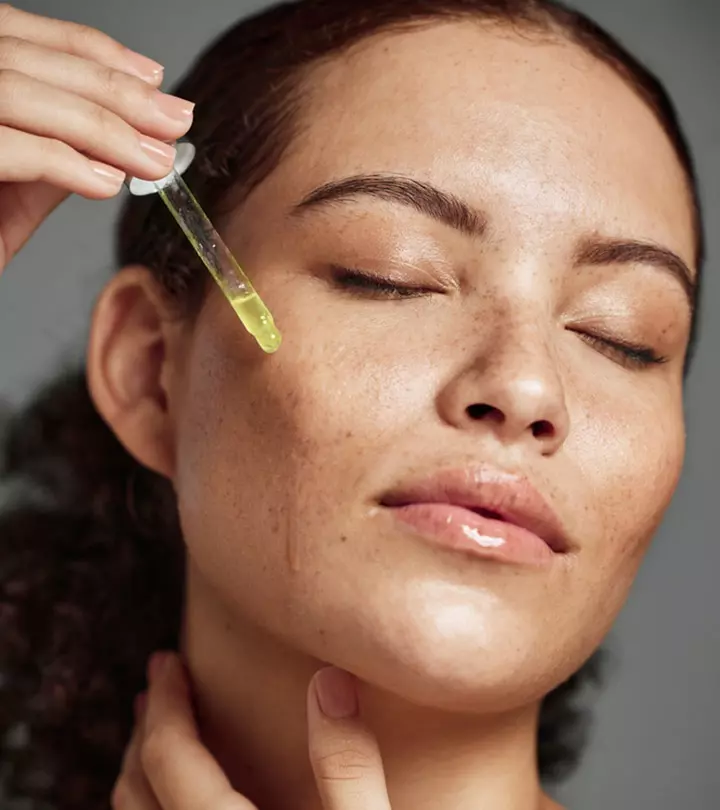
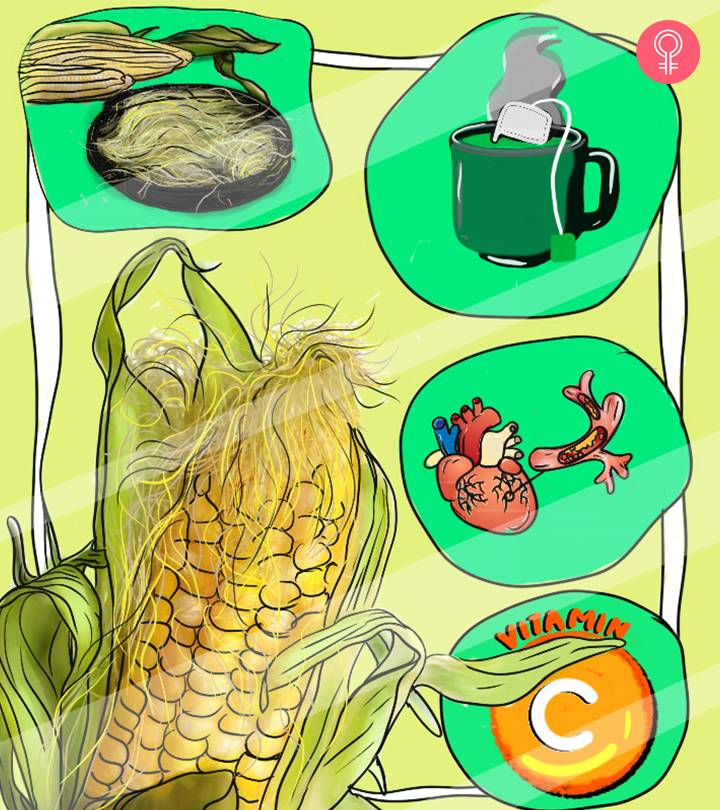
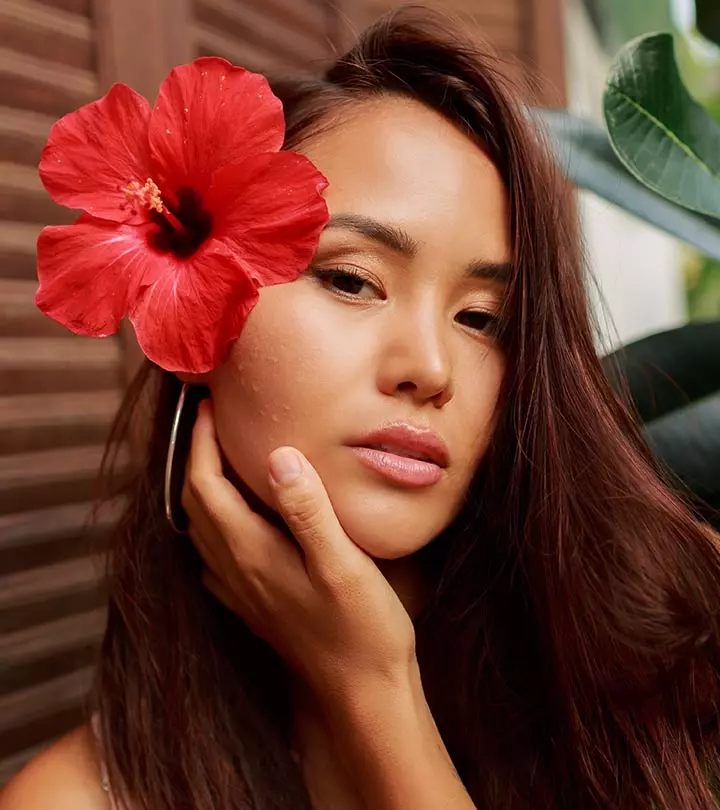
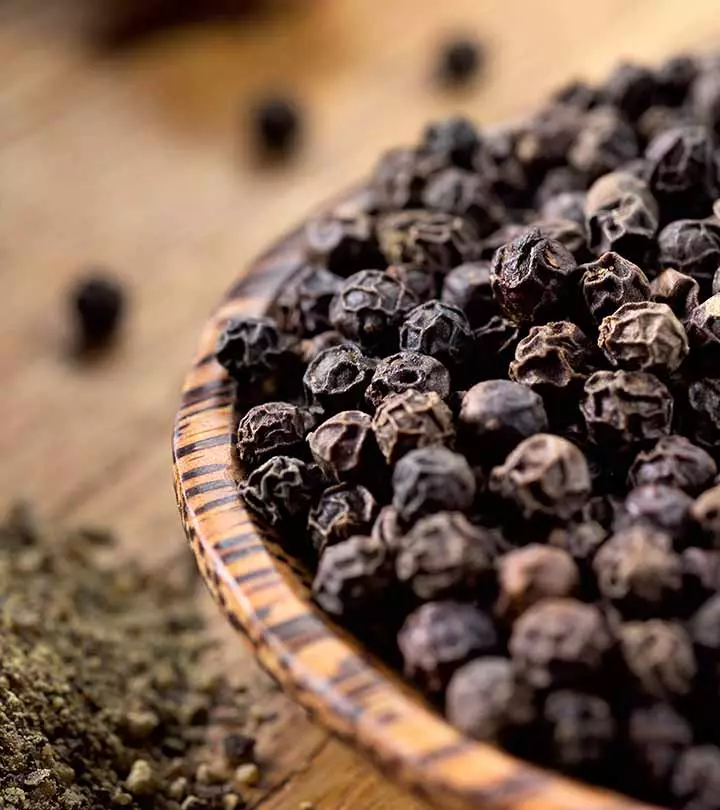


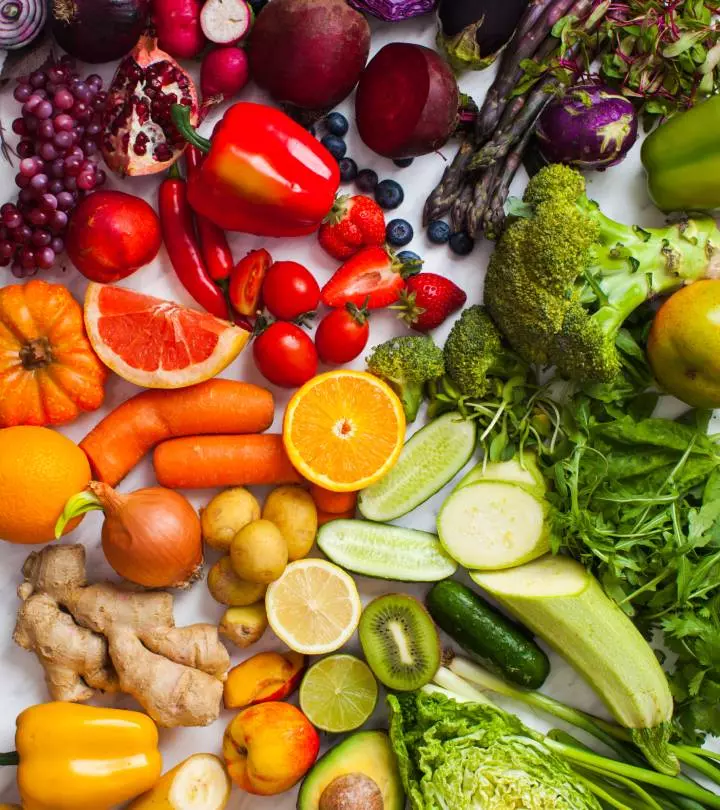
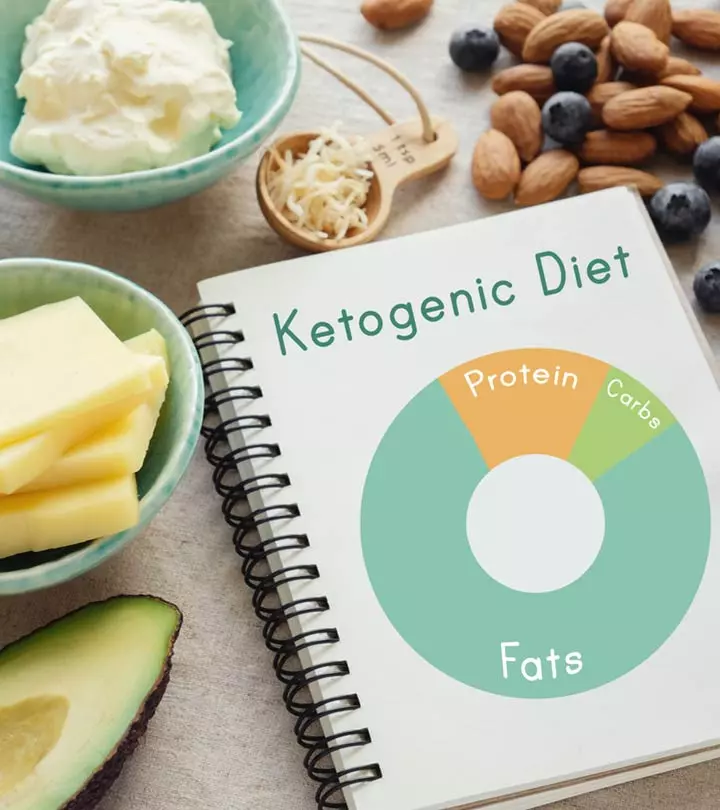

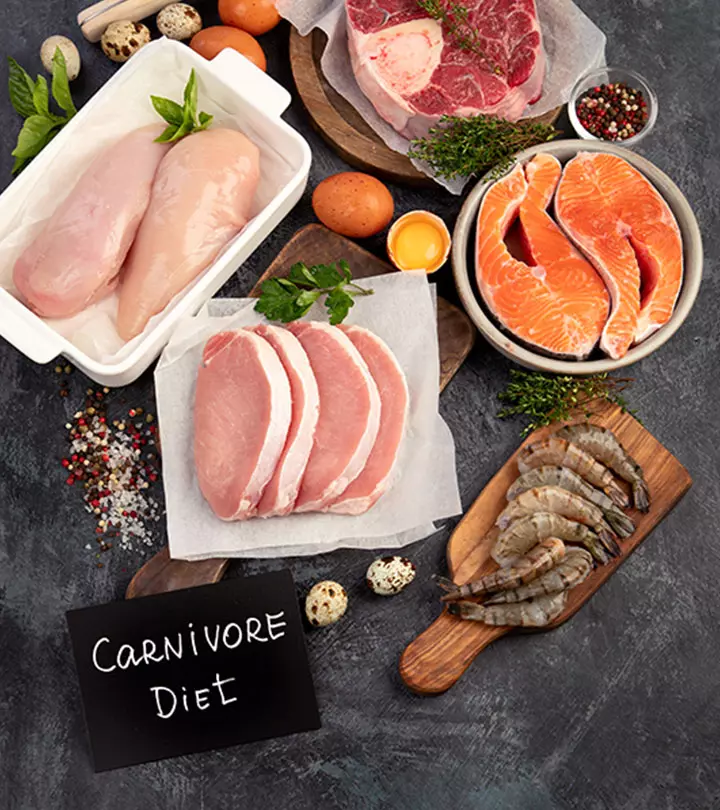
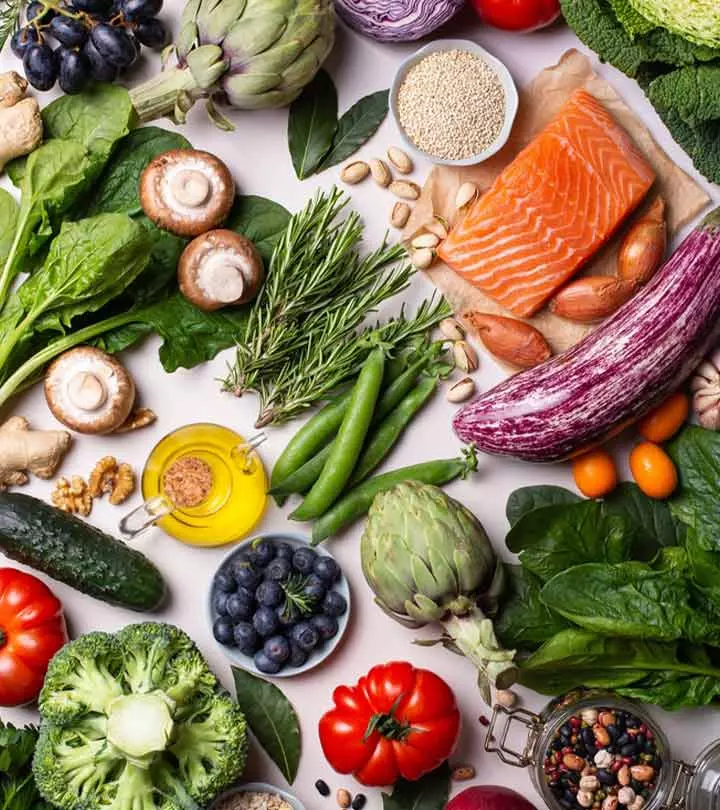

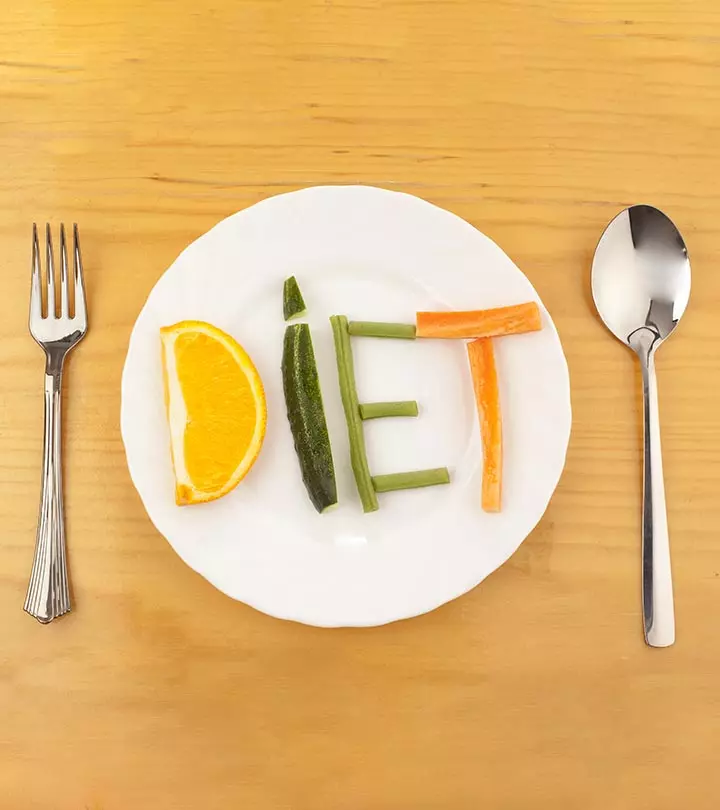
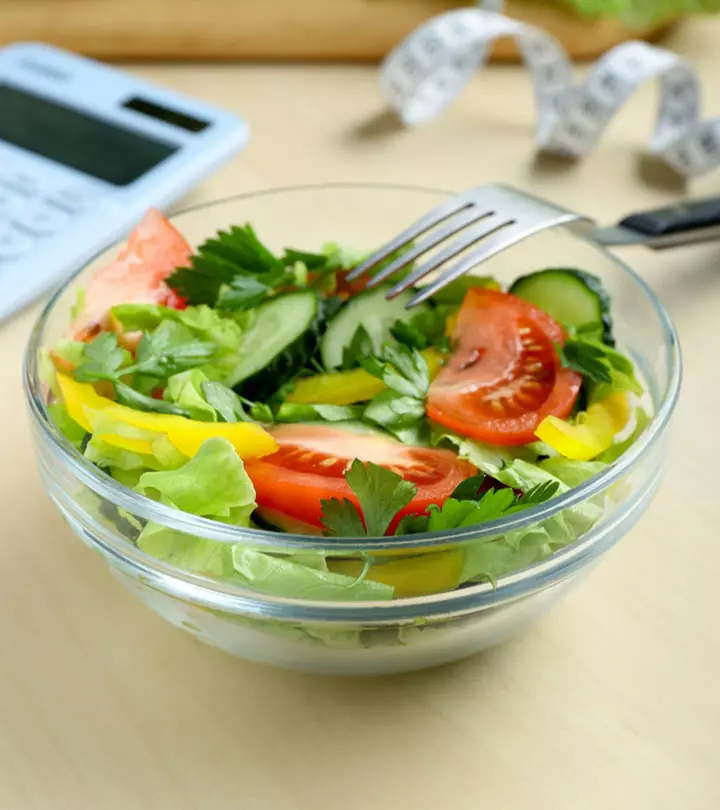



Community Experiences
Join the conversation and become a part of our empowering community! Share your stories, experiences, and insights to connect with other beauty, lifestyle, and health enthusiasts.